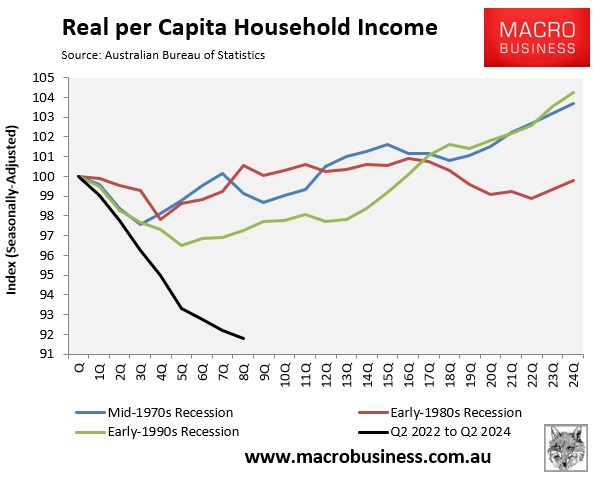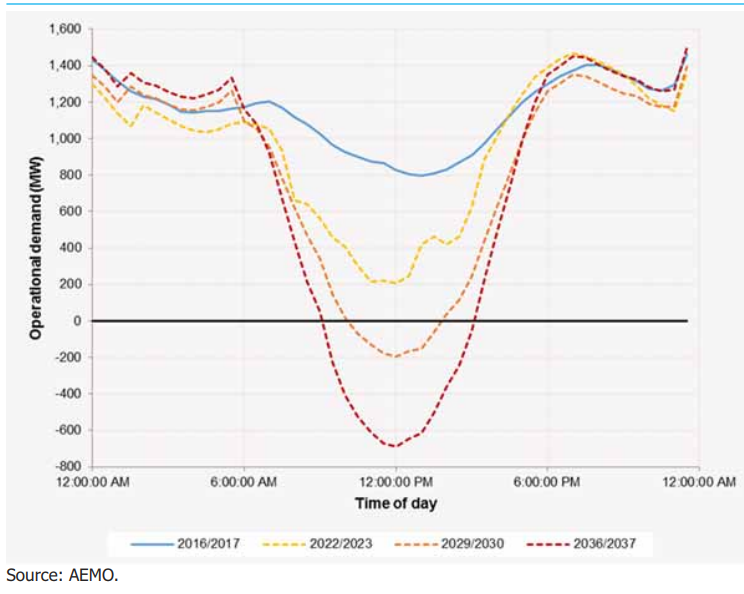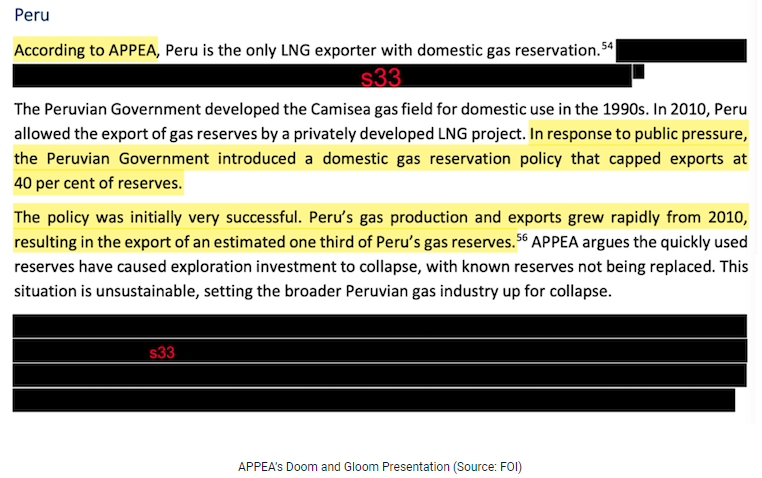Over the twelve years we’ve run this site, there have been many bad policy decisions, many stupid ideas, and an overwhelming number of greedy little men exploiting the nation.
At various times, this has seemed threatening to the future of the country, even if it survived.
However, nothing can match the harm that the East Coast gas cartel is causing to the country and its citizens today. This is existential.
The gas cartel political entity—for that is what it is—is so central to economic well-being that its distortions are ruining the country in real time.
This destruction takes five forms.
- Stagflation wrecking living standards.
- Derailed energy transition wrecking economy and planet.
- Corruption of Canberra politicians wrecking governance.
- Tools of macro-management wrecked.
- Foreign affairs wrecked.
Put simply, the gas cartel is an internal and external threat to Australia as a viable state.
1.Stagflation to wreck living standards
The gas cartel’s Ukraine War profiteering was immense.

This led to electricity prices skyrocketing 700%, adding 2-3% to CPI over two years.
This has played a key role in the crash in real income per capita:

Moreover, there is no end in sight. Gas prices are now at a permanently higher plateau above $12Gj owing to the federal government’s ruinous Mandatory Code of Conduct for gas.
The AEMO is now warning of gas shortages every winter; hence, the gas and electricity price shock will worsen every year.
2.Derailed energy transition to wreck economy and planet
While the National Electricity Market is starved of gas, the energy transition has been knocked completely off course.
Renewables add supply but they require firming power to be viable. That currently comes largely from coal.
However, as the renewables market share grows, coal power becomes unviable because it cannot turn off during glutted daylight hours of collapsed prices.
This is called the Duck Curve and it is forecast to get much worse by the Australian Energy Market Operator (AEMO):

This has already led to public subsidies for three coal-fired power stations in NSW and VIC.
Without more gas, more coal subsidies are ahead. Eventually, all coal-fired power will neither be able to turn off nor run profitably, and the sector will rely entirely on taxpayer support.
The Coalition is proposing nuclear power to fill the firming power gap, which can’t be done economically in any viable timeframe.
The ALP has no answer, either, ploughing towards a similar outcome as renewables will need the backup of 26 gas speakers that currently do not exist and cannot owing to the gas cartel
3.Corruption of policy process wrecks governance
Only the surrounding silence can compare in size to the destruction of the East Coast gas cartel.
This is a function of the capture by the cartel of the national policy process.
The cartel sponsors such think tanks as the Grattan Insitute which publishes cartel propaganda.
The ALP is terrified of the gas cartel pursuing negative publicity campaigns.
The LNP is captured via financial and personal links.
No East Coast state government has the jurisdiction to tackle the cartel in the manner that the WA government has.
As a result, the madness of extremely expensive gas imports in the east has replaced tried and trusted WA policies like domestic reservation and “use it or lose it” laws.
The cartel has rolled several independents that attempted to put the issue on the agenda.
Senator Rex Patrick passed the Stage Three Tax Cuts in return for a guarantee that domestic reservation would be imposed on the cartel. PM Morrison agreed but then broke his contract.
Teals have mentioned the cartel but without major party support, their efforts disappear quickly.
At the level of executive, it is even worse.
Rex Patrick recently used FIO to extract the following incredible brain explosion by the Department of Industry, Science and Resources (now DCCEEW) after Ukraine War profiteering became so extreme that the government was forced to act.
The Department acknowledged in the options paper that a domestic gas reservation policy was “a way to push producers towards offering longer term, lower cost supply contracts”.
In turn, reservation would “put downward pressure on domestic gas prices”, an obvious win for Australians.
But, instead, the Department used an obscure case study of Peru as a reason not to reserve gas domestically, an argument cherry-picked from the gas cartel:

This is factually false. Every gas exporter in the world bar Australia has a gas reservation policy, including the United States.
How was this idiocy favoured over the policy success of the WA reservation policy operating successfully since 2008 with both cheap prices and expanding investment?
Any eastern reservation policy would target the very same firms!
4.Wreckage in tools of macro-management
The direct result of the above is that the Australian economy is now labouring through endless stagflation that has put the Reserve of Australia at loggerheads with fiscal authorities.
Cowardly fiscal authorities have resorted to energy rebates to prevent the gas cartel utility bill shock from overwhelming households.
While this strategy impacts headline inflation, it does not lower core inflation because rebates are seen as temporary.

Even though fiscal authorities are tamping down energy inflation in the real economy, the RBA will not lower interest rates because it is concentrating on core inflation.
The spread between headline and core inflation is nearly 1%, keeping interest rates higher for longer and jeopardising RBA, as well as government credibility.

5.Wreckage in foreign affairs.
Finally, the gas cartel cuts across the tensions of Cold War 2.0, adding tensions to key alliances where none should be.
Three-quarters of East Coast gas goes to China via the cartel.
This is building Chinese weaponry on the cheap while Australia struggles to even keep explosives manufacturers afloat.
Worse, key Cold War 2.0 allies, Japan and Korea, have become paranoid about Australia cutting the flow of gas to their economies because the East Coast does not have enough.
Yet, we could impose domestic reservation by breaking a tiny amount of Chinese contracts, or North Asia more broadly, or just forcing spot gas to stay in Australia.
This would not harm allies in the long run because WA is still exporting the vast majority of Aussie gas their way.
East Coast gas has become a bleeding sore tipping pus into the heart of Australia’s North Asian allegiances, and it would be far better to act to fix it.
One bit of short-term pain and the relationships will settle into a new long-term rhythm, rather than the gas cartel worrying everybody all of the time.
There is no security of gas supply unless Australia has it as well.
The solution
15% of East Coast gas must be domestically reserved. Break whatever contract this requires, if any.
Build out gas storage in NSW and VIC so that pipeline flows from QLD can build inventories in the off-season like Europe and the US do.
Ensure sufficient gas pipeline capacity from QLD to VIC, if it is even needed.
These simple and cheap measures cure every problem in the energy transition, as well as ending stagflation, restoring macro-management, correcting governance and repairing foreign affairs.
Or watch your nation die.

